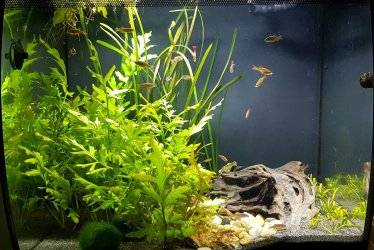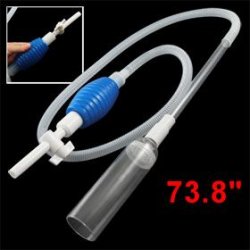IndiaHawker
Fish Fanatic
Hi, this is my first post here, plan to introduce myself properly in the introductions thread when I get chance later! For now, I'm just looking for some advice on this please.
I'm taking on a Fluval Flex 57L tank which includes about eight small fish (can't remember the species off the top of my head, if I remember correctly from past experience most/all of the fish are types that stay small! There is also a pleco/loach included (looks like a bristlenose but without the bristles - maybe because female or juvenile?) I think a bristlenose could outgrow the tank? But I guess a good excuse to invest in a larger tank a few years down the line if needed
I have done a lot of research on fishkeeping in the past, both tropical and saltwater, but have never actually kept my own (had them as a kid but tended to mostly by my mum). And I'm a bit rusty on my research as this has suddenly sprung up and I'm getting a tank on Monday!
So far I intend to add a substrate to the tank beneath the current small pebbles, I'd like to plant up the tank naturally, although there are one or two real plants in it they haven't really rooted in due to nothing beneath the pebbles. It's coming with all the equipment I need to maintain it so I don't need to worry about that. If anyone can offer me any suggestions/advice decoration or maintenance-wise - or with anything - I'd really appreciate it!
Last thing - will I be able to add a few more fish if I like? Or should I keep it as it is for the sake of the fish? It did have a lot more fish in it which I thought was overstocked based on what I've heard/read in the past - but it was set up by a well-known company as a school project for many schools to participate in so I was assuming it's okay?
Any help really appreciated! Please and thank you in advance
I'm taking on a Fluval Flex 57L tank which includes about eight small fish (can't remember the species off the top of my head, if I remember correctly from past experience most/all of the fish are types that stay small! There is also a pleco/loach included (looks like a bristlenose but without the bristles - maybe because female or juvenile?) I think a bristlenose could outgrow the tank? But I guess a good excuse to invest in a larger tank a few years down the line if needed
I have done a lot of research on fishkeeping in the past, both tropical and saltwater, but have never actually kept my own (had them as a kid but tended to mostly by my mum). And I'm a bit rusty on my research as this has suddenly sprung up and I'm getting a tank on Monday!
So far I intend to add a substrate to the tank beneath the current small pebbles, I'd like to plant up the tank naturally, although there are one or two real plants in it they haven't really rooted in due to nothing beneath the pebbles. It's coming with all the equipment I need to maintain it so I don't need to worry about that. If anyone can offer me any suggestions/advice decoration or maintenance-wise - or with anything - I'd really appreciate it!
Last thing - will I be able to add a few more fish if I like? Or should I keep it as it is for the sake of the fish? It did have a lot more fish in it which I thought was overstocked based on what I've heard/read in the past - but it was set up by a well-known company as a school project for many schools to participate in so I was assuming it's okay?
Any help really appreciated! Please and thank you in advance



 /www.ebay.co.uk/itm/RED-MOOR-AQUARIUM-WOOD-ROOT-SIZE-M-20-30cm-AQUASCAPING-BOGWOOD-DRIFTWOOD/173321108381?ssPageName=STRK:MEBIDX:IT&_trksid=p2057872.m2749.l2649
/www.ebay.co.uk/itm/RED-MOOR-AQUARIUM-WOOD-ROOT-SIZE-M-20-30cm-AQUASCAPING-BOGWOOD-DRIFTWOOD/173321108381?ssPageName=STRK:MEBIDX:IT&_trksid=p2057872.m2749.l2649
